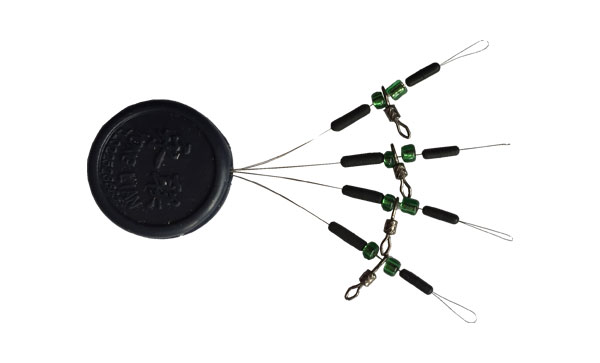

Buoys of the same brand and model cannot be exactly the […]
Buoys of the same brand and model cannot be exactly the same in the production process. Therefore, fishermen must learn how to choose a buoy before buying a buoy. The following will teach you how to identify a good buoy.
1. Appearance inspection
The first step is visual inspection. First determine the material of the buoy. Secondly, look at the appearance of the buoy. Hold the buoy in your hand and place the buoy between the thumb and forefinger of the other hand. While rotating, check whether the left and right sides of the buoy are symmetrical, and whether the tip and feet are symmetrical. Form a straight line. If there are differences in height, width and narrowness of the standard shoulder, and the two sides of the standard body are obviously different, it means that the workmanship is poor.
During the visual inspection, it is also necessary to check whether the color of the mark tip is clear, whether the spacing is uniform, and whether the lacquer is perfect, because the mark tip is the standard for observing fish information, and whether it is clear will directly affect the judgment of fish information.
The second step, feel. Pick up the buoy's standard foot with one hand and gently rotate it, while the thumb, index finger, and middle finger of the other hand pinch the buoy body and slide it slowly from top to bottom, carefully feeling the concentricity of the buoy body and the thickness of the paint , Well-made high-quality buoys generally handle these details very well.
2.Rolling inspection
A good buoy can reflect the fish situation very well. Whether its center of gravity is on the central axis of the target body is very important. The method of checking is: put the buoy on a smooth platen and gently blow it with your mouth. Rolling is fast and smooth, and there is no swaying or shaking during the rolling, indicating that it is a well-made buoy; on the contrary, if there is shaking, swaying, etc., it means that the concentricity of the buoy is poor and it is not a good standard.

3. Maintenance and repair of buoy
Once the tail is stained with dirt, it will be difficult to see the movement of the buoy in dimly lit, backlit environments or in rainy weather, let alone capturing the first signal.
How to solve this problem? In fact, the method is very simple. If the pollution is not very serious, you can wipe it with clean water to remove the dirt, but it cannot be soaked in organic solvents to avoid fading of the indicator bar. If the dirt is serious and the tail is hollow, you can directly remove the tail of the buoy, buy a new one, and fix it with glue.
The following solutions can be taken for solid headers:
Step 1: Remove the old color on the marking rod. Fold a piece of paper in half to make the section into a "w" shape, drop a small amount of banana water into the groove, wait for it to spread evenly, immerse the marked part of the buoy in it (the principle of not touching the target part), and rotate the mark Make the marked mesh evenly coated with solvent and let it stand for 5 minutes. Take it out and wipe it with a clean cloth or toilet paper to remove the original color. Wait until the end of the marking is bare white.
Step 2: Determine the length of the color mesh. Use a ruler to measure and mark the distance on the fiber rod, usually divided by purpose. When fishing crucian carp, the buoy is exactly one color per centimeter. You can also refer to the tail of other buoys. After measuring the distance, pinch the tail and rotate it slowly. Draw black lines.
Step 3: Paint new colors. Take out the water-soluble fluorescent paint, dipped in water with a fine pen or watercolor pen and mix evenly. The coloring steps are still the same as drawing a line. Pinch the tail of the buoy and slowly rotate to apply the fluorescent paint evenly. However, there is no restriction on what kind of paint to use. General oily fluorescent paint is also available, but the time required for the paint to dry must be considered. The main color of the color can be freely selected.